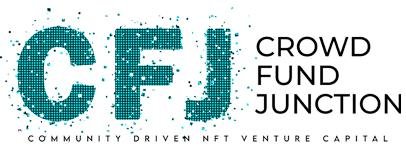Stablecoin Reduction and Quiet Order Books Put Crypto Liquidity on
The Crypto Illusion That Could Go to Zero
(Originally posted on : Crypto News – iGaming.org )
Pi Network has gained a massive following by promising an easy way to mine cryptocurrency on mobile devices. Many of its users believe they are sitting on a fortune, expecting to cash in on thousands of dollars when the coin gains wider adoption. However, the reality is far from that dream. Pi Network shows all the signs of a well-orchestrated Ponzi scheme, where only the team behind it stands to gain, while users are left holding nothing but empty promises. Worse yet, personal data collected through its Know Your Customer (KYC) process may also be at risk.
The False Promise of Easy Mining
Pi Network was founded by Stanford graduates Dr. Nicolas Kokkalis and Dr. Chengdiao Fan, with Vincent McPhillip initially involved. They pitched the idea that anyone could mine Pi using a mobile app without specialized hardware. What this actually means is that users were running a simple script that produced tokens, but without a functioning blockchain in place for years.
Since launching in 2019, Pi Network has amassed millions of users, each mining what they assumed would be valuable cryptocurrency. With a total supply of 100 billion Pi coins and only 6.76 billion in circulation, the illusion of value has kept users engaged. However, there is little to no actual use for Pi, no meaningful adoption, and a lack of genuine decentralization.
A Controlled Price With No Real Market
Until recently, it held the 11th spot on CoinMarketCap with a market cap exceeding $12 billion. Many of its holders believe it is the next Bitcoin, clinging to the hope that their mined tokens will be worth thousands of dollars. However, the truth may be harder to accept. Instead of being the next big cryptocurrency, Pi appears to be nothing more than an overhyped project running on empty promises.
Currently trading at $0.83, Pi briefly touched just under $3 last month before stabilizing around $1.60 for a few weeks. However, it has since begun another sharp decline, reinforcing concerns that the hype is fading fast.
New players only. Exclusive 111% Welcome Bonus + 111 Free Spins
Unlike legitimate cryptocurrencies, Pi has not been listed on major platforms like Binance or Coinbase. How it usually works in the crypto world, teams usually pay exchanges millions in listing fees and provide liquidity, yet Pi’s team has not done so. Instead, price swings appear to be artificially created by the team transferring their own holdings to make it seem like there is demand. When the overall crypto market declined, Pi initially moved against the trend, an unusual pattern that suggests manipulation.
Recently, Pi lost 10% of its value in a single day and has fallen by 50% in just 12 days. Without genuine market interest, the trajectory appears to be heading toward zero.
KYC and Data Privacy Concerns
One of the biggest red flags is Pi Network’s KYC process. Unlike other cryptocurrencies that embrace privacy and decentralization, Pi forced its users to submit personal identification to access their mined tokens. While the team claimed this was to prevent fraud and secure the network, it also conveniently handed them a massive database of sensitive user information.
Over 13 million users had completed KYC by August 2024, with 8-10 million migrating to Mainnet by early 2025. Those who missed the March 14, 2025 deadline lost most of their mined Pi, keeping only what they earned in the last six months. While some defended the deadline as a fair way to filter out inactive accounts, many saw it as a way to control supply and pressure users into providing personal data.
New players only. Exclusive Welcome Bonus of 350% + 150 Free Spins
In crypto, data is valuable, and large-scale KYC information is a prime asset that could easily be sold. Pi’s insistence on KYC raises serious concerns about whether users’ personal data is truly secure.
Growing Criticism
Pi Network has faced increasing backlash from the crypto community. Some of the most common criticisms include:
- Scam Allegations: Many users call Pi a Ponzi scheme designed to keep people engaged while the core team benefits. A 2023 Chinese police notice reportedly warned against Pi as a scam, particularly targeting users in Nigeria and India.
- No Real Use Case: Despite promises of a Web3 ecosystem, Pi has no functional decentralized applications (dApps) or meaningful adoption. Many users who joined in 2021 and 2022 now openly question where the promised ecosystem is.
- Community Manipulation: Pi’s mining model requires users to press a button daily to claim coins, creating a psychological trick to keep them engaged. Critics argue this is not real mining and only serves to keep users locked into the network.
The Future: A Race to Zero
Without exchange listings, no clear use case, and growing skepticism, Pi appears headed for collapse. Many users who believed in the hype are beginning to realize they may never cash out. Large amounts of Pi are set to be unlocked between April 2025 and March 2026, adding another 1.6 billion coins into circulation. With no real demand, this will likely push prices down further.
The Lesson to Learn
Pi Network serves as a cautionary tale in crypto. While Bitcoin and other legitimate cryptocurrencies operate with open-source, verifiable blockchain technology, Pi remains a closed system controlled by a few individuals. Its artificial scarcity, forced KYC, and lack of exchange listings indicate it was never about financial inclusion but rather a data collection scheme disguised as a cryptocurrency.
The message is clear: Pi Network is not the next Bitcoin. Instead, it looks like a slow-moving Ponzi scheme that will eventually collapse under its own weight. For those still holding Pi, the reality may be difficult to accept, but the market is already speaking. Pi is on its way to zero.
Traders who see the writing on the wall are shorting Pi on platforms like MEXC, which allows leverage up to $40,000. Given the lack of liquidity and real demand, shorting Pi may prove to be the most profitable way to interact with the coin at this point.







 Bitcoin
Bitcoin  Ethereum
Ethereum  Tether
Tether  XRP
XRP  USDC
USDC  Wrapped SOL
Wrapped SOL  TRON
TRON  Lido Staked Ether
Lido Staked Ether  Dogecoin
Dogecoin  Cardano
Cardano  Figure Heloc
Figure Heloc  WhiteBIT Coin
WhiteBIT Coin  Zcash
Zcash  Wrapped stETH
Wrapped stETH  Wrapped Bitcoin
Wrapped Bitcoin  Hyperliquid
Hyperliquid  Bitcoin Cash
Bitcoin Cash  USDS
USDS  Chainlink
Chainlink  Binance Bridged USDT (BNB Smart Chain)
Binance Bridged USDT (BNB Smart Chain)  LEO Token
LEO Token  Stellar
Stellar  Ethena USDe
Ethena USDe  WETH
WETH  Wrapped eETH
Wrapped eETH  Litecoin
Litecoin  Coinbase Wrapped BTC
Coinbase Wrapped BTC  Monero
Monero  Avalanche
Avalanche  Hedera
Hedera  Sui
Sui  Shiba Inu
Shiba Inu  Dai
Dai  Ethena Staked USDe
Ethena Staked USDe  Polkadot
Polkadot  Uniswap
Uniswap  Toncoin
Toncoin  USDT0
USDT0  Cronos
Cronos  sUSDS
sUSDS  PayPal USD
PayPal USD  World Liberty Financial
World Liberty Financial  MemeCore
MemeCore  Mantle
Mantle  Canton
Canton  Bittensor
Bittensor  USD1
USD1  NEAR Protocol
NEAR Protocol  Currency One USD
Currency One USD  Internet Computer
Internet Computer  Bitget Token
Bitget Token  Aave
Aave  Aster
Aster  BlackRock USD Institutional Digital Liquidity Fund
BlackRock USD Institutional Digital Liquidity Fund  OKB
OKB  Falcon USD
Falcon USD  Tether Gold
Tether Gold  Ethereum Classic
Ethereum Classic  Pi Network
Pi Network  Aptos
Aptos  Pepe
Pepe  Ethena
Ethena  Jito Staked SOL
Jito Staked SOL  Jupiter Perpetuals Liquidity Provider Token
Jupiter Perpetuals Liquidity Provider Token  Binance-Peg WETH
Binance-Peg WETH  Pump.fun
Pump.fun  HTX DAO
HTX DAO  Ondo
Ondo  Worldcoin
Worldcoin  KuCoin
KuCoin  POL (ex-MATIC)
POL (ex-MATIC)  PAX Gold
PAX Gold  Cosmos Hub
Cosmos Hub  USDtb
USDtb  Official Trump
Official Trump  BFUSD
BFUSD  syrupUSDC
syrupUSDC  Binance Bridged USDC (BNB Smart Chain)
Binance Bridged USDC (BNB Smart Chain)  Filecoin
Filecoin  Algorand
Algorand  Kinetiq Staked HYPE
Kinetiq Staked HYPE  Rocket Pool ETH
Rocket Pool ETH  Global Dollar
Global Dollar  Arbitrum
Arbitrum  Wrapped BNB
Wrapped BNB  Gate
Gate  Circle USYC
Circle USYC  Binance Staked SOL
Binance Staked SOL  syrupUSDT
syrupUSDT  VeChain
VeChain  Ripple USD
Ripple USD  Sky
Sky  Starknet
Starknet  Function FBTC
Function FBTC